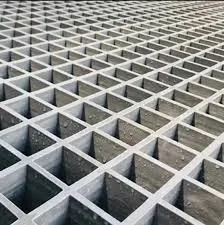
-
 Afrikaans
Afrikaans -
 Albanian
Albanian -
 Amharic
Amharic -
 Arabic
Arabic -
 Armenian
Armenian -
 Azerbaijani
Azerbaijani -
 Basque
Basque -
 Belarusian
Belarusian -
 Bengali
Bengali -
 Bosnian
Bosnian -
 Bulgarian
Bulgarian -
 Catalan
Catalan -
 Cebuano
Cebuano -
 China
China -
 China (Taiwan)
China (Taiwan) -
 Corsican
Corsican -
 Croatian
Croatian -
 Czech
Czech -
 Danish
Danish -
 Dutch
Dutch -
 English
English -
 Esperanto
Esperanto -
 Estonian
Estonian -
 Finnish
Finnish -
 French
French -
 Frisian
Frisian -
 Galician
Galician -
 Georgian
Georgian -
 German
German -
 Greek
Greek -
 Gujarati
Gujarati -
 Haitian Creole
Haitian Creole -
 hausa
hausa -
 hawaiian
hawaiian -
 Hebrew
Hebrew -
 Hindi
Hindi -
 Miao
Miao -
 Hungarian
Hungarian -
 Icelandic
Icelandic -
 igbo
igbo -
 Indonesian
Indonesian -
 irish
irish -
 Italian
Italian -
 Japanese
Japanese -
 Javanese
Javanese -
 Kannada
Kannada -
 kazakh
kazakh -
 Khmer
Khmer -
 Rwandese
Rwandese -
 Korean
Korean -
 Kurdish
Kurdish -
 Kyrgyz
Kyrgyz -
 Lao
Lao -
 Latin
Latin -
 Latvian
Latvian -
 Lithuanian
Lithuanian -
 Luxembourgish
Luxembourgish -
 Macedonian
Macedonian -
 Malgashi
Malgashi -
 Malay
Malay -
 Malayalam
Malayalam -
 Maltese
Maltese -
 Maori
Maori -
 Marathi
Marathi -
 Mongolian
Mongolian -
 Myanmar
Myanmar -
 Nepali
Nepali -
 Norwegian
Norwegian -
 Norwegian
Norwegian -
 Occitan
Occitan -
 Pashto
Pashto -
 Persian
Persian -
 Polish
Polish -
 Portuguese
Portuguese -
 Punjabi
Punjabi -
 Romanian
Romanian -
 Russian
Russian -
 Samoan
Samoan -
 Scottish Gaelic
Scottish Gaelic -
 Serbian
Serbian -
 Sesotho
Sesotho -
 Shona
Shona -
 Sindhi
Sindhi -
 Sinhala
Sinhala -
 Slovak
Slovak -
 Slovenian
Slovenian -
 Somali
Somali -
 Spanish
Spanish -
 Sundanese
Sundanese -
 Swahili
Swahili -
 Swedish
Swedish -
 Tagalog
Tagalog -
 Tajik
Tajik -
 Tamil
Tamil -
 Tatar
Tatar -
 Telugu
Telugu -
 Thai
Thai -
 Turkish
Turkish -
 Turkmen
Turkmen -
 Ukrainian
Ukrainian -
 Urdu
Urdu -
 Uighur
Uighur -
 Uzbek
Uzbek -
 Vietnamese
Vietnamese -
 Welsh
Welsh -
 Bantu
Bantu -
 Yiddish
Yiddish -
 Yoruba
Yoruba -
 Zulu
Zulu
frp chimney construction and installation for industrial and ...
FRP Chimney Construction and Installation for Industrial Applications
Fiber Reinforced Plastic (FRP) chimneys have rapidly gained popularity in industrial applications due to their unique properties and advantages over traditional materials. The construction and installation of FRP chimneys involve several critical steps, ensuring durability, efficiency, and compliance with industrial standards.
Benefits of FRP Chimneys
FRP chimneys are renowned for their lightweight nature, high strength-to-weight ratio, and corrosion resistance. Unlike traditional materials, such as steel or concrete, FRP does not corrode, making it ideal for industrial environments where exposure to harsh chemicals and extreme weather conditions is common. This characteristic not only extends the lifespan of the chimney but also reduces maintenance costs. Furthermore, FRP chimneys are designed to withstand high temperatures, making them suitable for various industrial processes, including power generation and manufacturing.
Design Considerations
The design of an FRP chimney is crucial for its performance and structural integrity. Factors such as the height of the chimney, the type of emissions, and the specific industrial requirements must be taken into account. The chimney must be tall enough to ensure that emissions disperse adequately, minimizing ground-level pollution. Additionally, the design must accommodate expansion and contraction due to temperature fluctuations, ensuring that the chimney remains structurally sound over time.
Manufacturing Process
The manufacturing process of FRP chimneys involves layering fiberglass mat, resin, and other additives. This combination creates a strong composite material that can be molded into various shapes and sizes. Advanced manufacturing technologies, such as filament winding and hand layup, are employed to produce the chimneys with precision and consistency. Quality control is paramount in this stage, as any defects can compromise the chimney's performance and safety.
frp chimney construction and installation for industrial and ...

Installation Procedures
The installation of FRP chimneys requires careful planning and execution. The site must be prepared, ensuring that the foundation is stable and level to support the structure. Once the foundation is complete, the sections of the FRP chimney are lifted into position using cranes or other lifting equipment. It is essential to follow safety protocols during this phase to prevent accidents and ensure the safety of workers.
Joining the sections of an FRP chimney can be done through various methods, including bolting or adhesive bonding. Each method has its advantages, and the choice depends on the specific application and environmental conditions. After assembly, the chimney must be anchored securely to withstand wind loads and seismic activity.
Testing and Quality Assurance
Once the installation is complete, the FRP chimney undergoes rigorous testing to ensure it meets all necessary safety and performance standards. This includes checking for structural integrity, verifying that there are no leaks, and confirming that it can adequately handle the intended emissions. Compliance with local regulations and environmental standards is crucial, as failures in these areas can lead to significant fines and damage to the company's reputation.
Conclusion
In summary, the construction and installation of FRP chimneys in industrial applications offer several benefits, including durability, lightweight design, and corrosion resistance. With careful design, quality manufacturing, and precise installation, FRP chimneys can significantly enhance the efficiency and safety of industrial operations. As industries continue to prioritize environmental sustainability and operational efficiency, the usage of FRP chimneys is expected to grow, setting new standards for emissions management in industrial settings. By understanding the intricacies involved in this process, industries can make informed decisions that align with their operational goals while ensuring compliance with environmental regulations.









